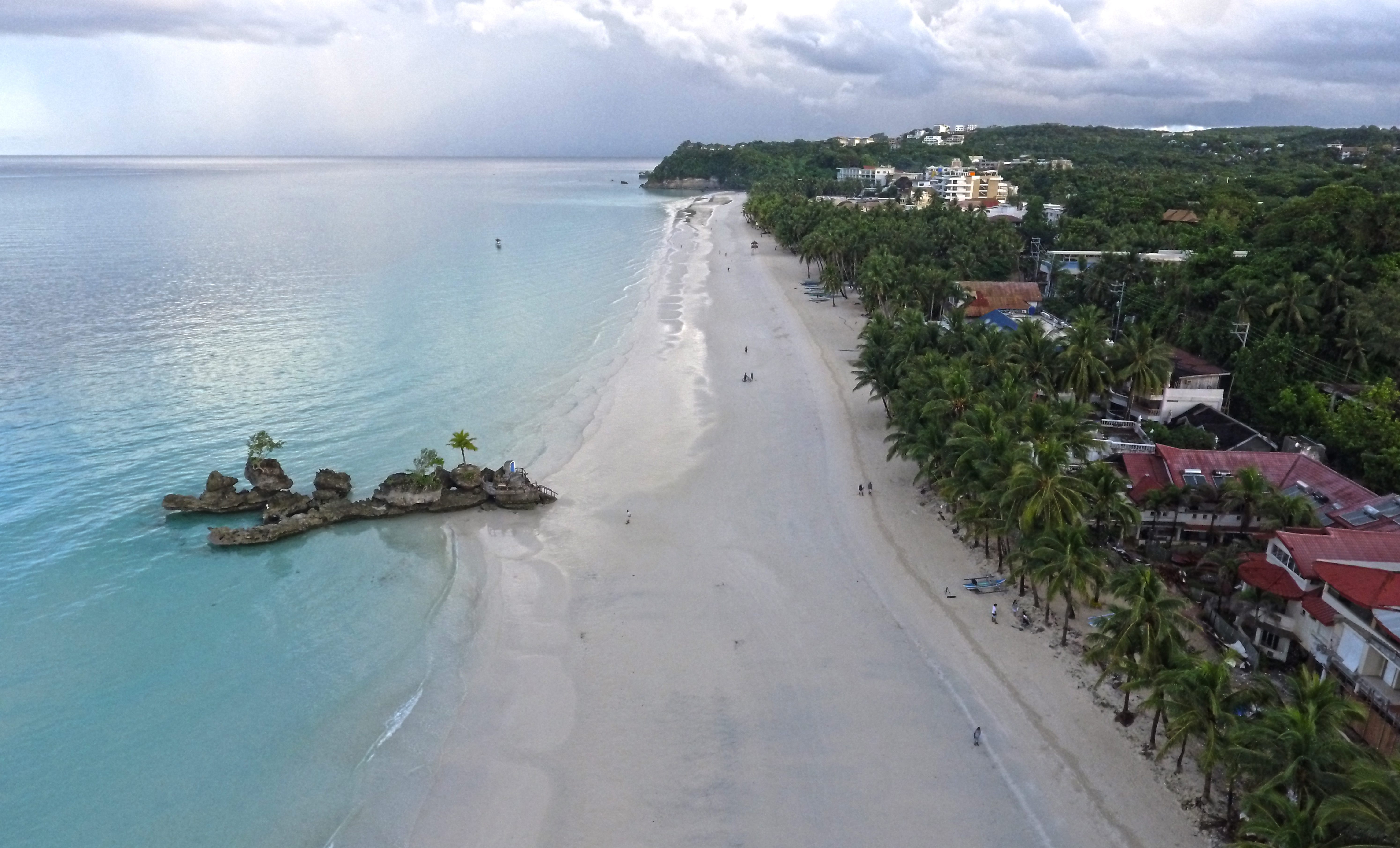
By Marichu A. Villanueva
The year 2018 is marked by a number of significant events, many of which drastically changed the country’s political landscape. On the second year of President Rodrigo Duterte’s administration, the country’s was still riding high on the crest of his presidential campaign slogan “change is coming.”
But, as far as the administration is concerned, the year was not without its share of bumps, as President Duterte, through the initiatives of opposition-hired lawyers, was charged by an international body of jurists of committing alleged “crimes against humanity.”
Undaunted by the possibility of being removed from office and prosecuted by a world court body, President Duterte continued with his much criticized war on illegal drugs. The death toll from the police’s “tokhang” operations continued to climb with the neutralization of more suspected “narco” politicians, crooked cops and petty drug peddlers.
And in what could be considered as one of the most unexpected developments this year, President Duterte closed down to tourists and various stakeholders for six months the celebrated island resort of Boracay, which he previously described had deteriorated into “cesspool” through years of overdevelopment and environmental abuse. Foreign and local tourists were banned from enjoying Boracay’s world-famous white-sand beaches and blue-green waters, as government clamped down on all establishments from operating.
Meanwhile, many Filipinos continued to reel from the impact of high prices of gasoline, rice and other basic goods, which they directly blamed on the imposition of the Tax Reform Acceleration and Inclusion (TRAIN) Law starting January 1 this year. The President is expected to implement a second round of increases of excise taxes on all fuel products under the TRAIN Law in early 2019.

***
As the Duterte administration turned two years in office, these changes and developments started to hog the limelight.
TRAIN blamed for rise in inflation
Starting on the first day of January this year, Republic Act 10963, otherwise known as the Tax Reform Acceleration and Inclusion (TRAIN) Law, took effect. Among other things, the TRAIN Law provided exemptions to workers who earn P250,000 annually or P21,000 monthly (or less) from paying personal income tax (PIT).
On the other hand, those earning over P250,000 have to follow tax rates based on a set PIT schedules. Essentially, those who generate greater income are taxed more based on higher tax rates.
But the TRAIN Law also imposed new and higher excise taxes on fuel products such as gasoline, diesel and coal. Cosmetics and tobacco products were also taxed more following the TRAIN Law.
President Duterte’s economic managers, led by Finance Secretary Carlos Dominguez, originally estimated the impact of the TRAIN Law to likely push inflation by an average of 0.4 percent on a month-to-month basis. However, the country’s actual average inflation rate started to move north in July when prices of basic goods and services soared beyond six percent.
Unforeseen events like the failure of the National Food Authority (NFA) to import rice during the lean period, coupled with rising prices of crude oil in the global market and fluctuations in the peso-dollar exchange rate further, pushed inflation rate up.
As the chief monetary policymaker, the Bangko Sentral ng Pilipinas implemented the strongest interest rate hike in 10 years by raising interest rates by 50 basis points “to tame inflation.”
Stepping in to avert the further inching up of the country’s inflation rate, President Duterte approved a slew of administrative measures–from relaxing tariff rates to removal of non-tariff barriers–to stabilize supply of rice and other basic goods.
Inflation slowed down to six percent in November, the first decline this year, according to the Philippine Statistics Authority (PSA). The rate eased from 6.7 percent in October, its highest increase recorded this year.
“Cesspool” Boracay closed down for business, reopens six months later
In February this year, President Duterte likened Boracay’s waters off Aklan to a “cesspool” and ordered the island resort’s closure from foreign and local tourists. It was also during this period when all illegal underground water and sewage connections that discharge untreated effluents directly to the sea were removed.
Of the more than 200 business establishments inspected by the government on Boracay, only 25 were found connected to the sewage lines. It was also learned that many violated easement rules by building their establishments too close to the beach. Not a few were even already crowding into roads.
Boracay attracts more than two million tourists yearly and brings in P56 billion in annual revenues. President Duterte warned the situation was a looming environmental “disaster” and a “tragedy” that could soon drive visitors away from the island, which is located about 190 kms. south of Manila.
He ordered an inter-agency task force led by Environment Secretary Roy Cimatu to clean up Boracay. “I’ll give you six months. Clean the goddamn thing,” the President told Cimatu.
The Department of Tourism (DOT) headed by Secretary Berna Romulo-Puyat identified Panglao island in Bohol and El Nido in Palawan as the next targets in the government’s campaign to save and protect our country’s premier tourist destinations. As part of the inter-agency task force, Romulo-Puyat warned non-compliant tourism-oriented establishments in Panglao and El Nido that they would be dealt with, Boracay-style, if they continue to refuse to comply.
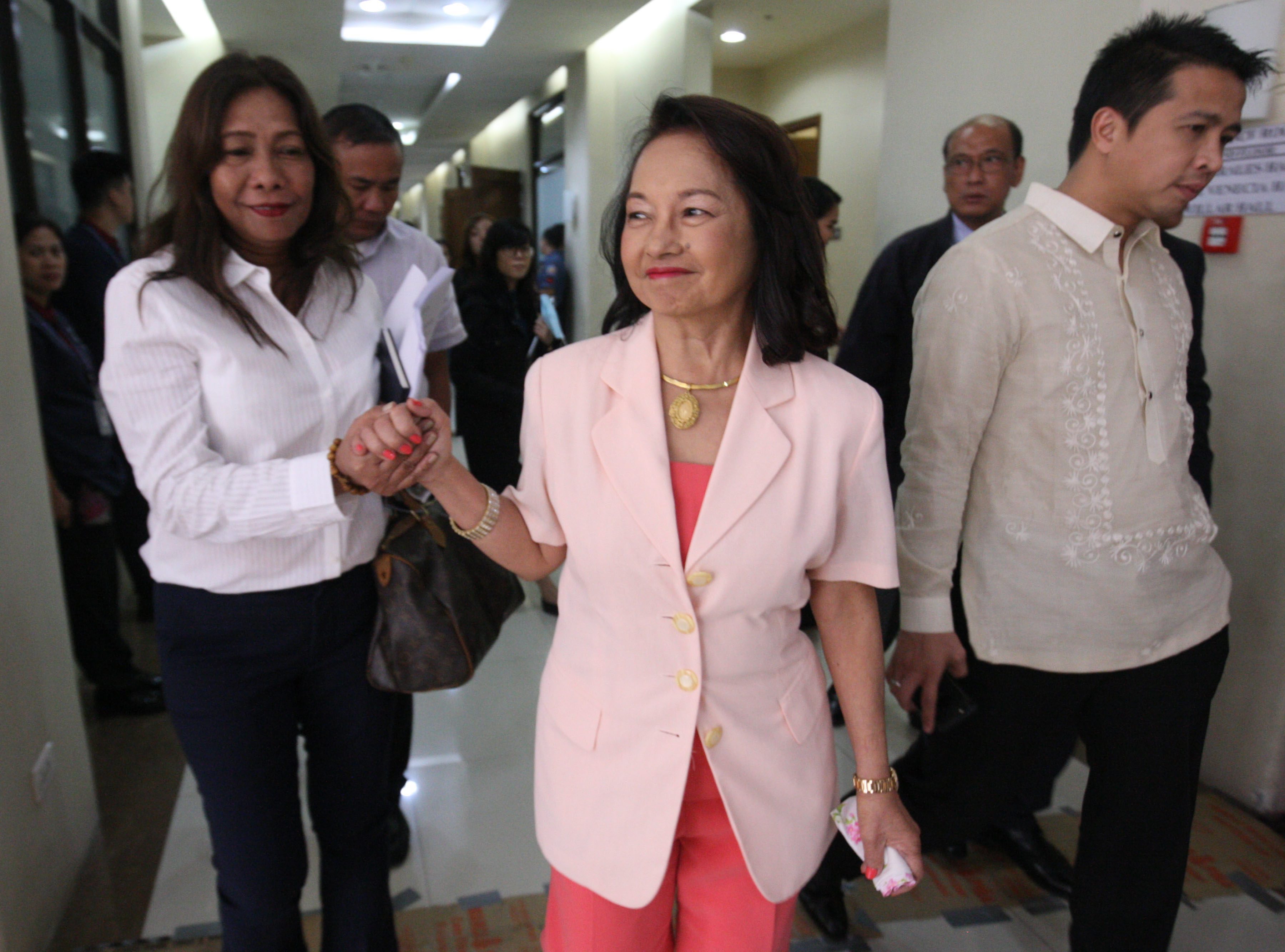
Quo warranto petition ousts Sereno as Chief Justice
The shocking change within judiciary came early this year, courtesy of the executive branch, specifically the Office of the Solicitor General.
Like a bolt of lightning, then Chief Justice of the Supreme Court (SC) Ma.Lourdes Sereno soon found herself ousted from office not through impeachment, but through a quo warranto petition slapped against her by fellow magistrates.
Via a close voting of 8-6 in May this year, the High Court found Sereno’s appointment in 2012 as void ab initio or void from the beginning.
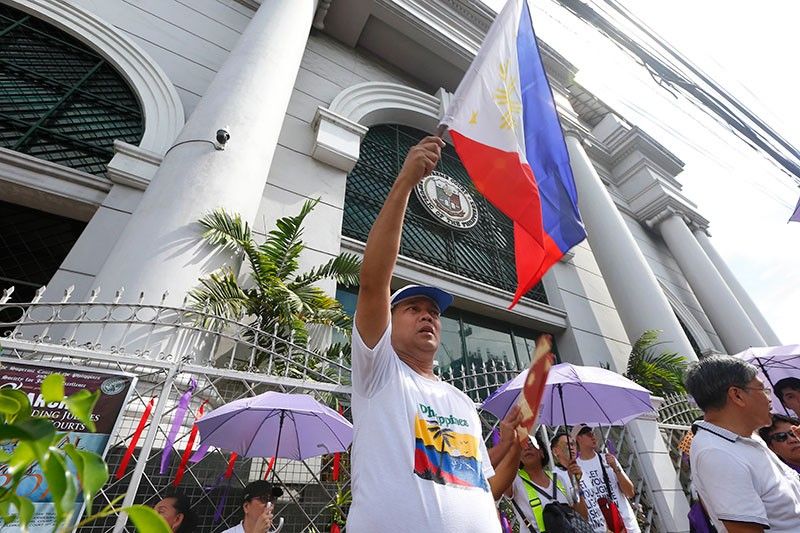
This was after Solicitor General Jose Calida, on March 5, accused Sereno of “unlawfully holding” the position of chief justice because she failed to “meet the integrity test” when she only filed three of her Statements of Assets, Liabilities and Net Worth (SALN) in 2012 when she first joined the SC.
A quo warranto petition is defined under Rule 66 of the Rules of Court. It can be filed against a “person who usurps, intrudes into, or unlawfully holds or exercises a public office, position or franchise.”
It was former President Benigno “PNoy” Aquino lll who first appointed Sereno to the SC in August 2010, becoming the youngest ever member of the highest court of the land so far this century. Over other much more senior associate justices waiting in line, PNoy appointed Sereno later in 2012 to become the new chief justice and the first ever woman to hold the job.
While facing then an impeachment case filed by lawyer Larry Gadon, Sereno was also facing a separate petition filed by the Solicitor General before the SC, which claimed she was unfit to hold the post. According to the quo warranto petition, Sereno failed to file her SALN during a 17-year period.
Acting on the impeachment complaint filed in September 2017, the House committee on justice ruled that there was enough grounds to impeach Sereno as sitting chief justice of the 15-man High Court. On March 8 this year, 38 House panel members voted to impeach Sereno, with only two casting “No” votes.
But before the House Committee on Justice was able to draft articles of impeachment against Sereno to be submitted for plenary action, the SC majority voted in favor of the quo warranto petition against her.
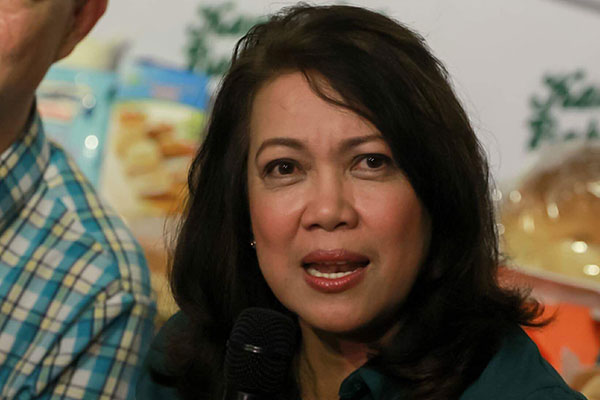
Sereno’s, being the country’s first ever woman chief justice, was effectively erased in the annals of SC history. Ironically, she was replaced by associate justice Teresita de Castro, who was among her SC colleagues who testified against her during the House committee’s public hearing on her impeachment.
Based on his wish to restore the seniority rule in the judiciary, President Duterte would have appointed senior associate justice Antonio Carpio who had been acting chief justice while Sereno took a medical leave. However, being identified with complainants against Sereno, Carpio begged off from being nominated out of delicadeza.
But Carpio subsequently admitted his possible appointment as chief justice might be untenable since he had publicly expressed his disagreement with the policy stance of President Duterte on the West Philippine Sea maritime territorial dispute with China. Carpio was one of the Philippine government officials who argued before the Permanent Court of Arbitration at The Hague, where the previous administration won the Philippine case that rejected Beijing’s nine-dash line claims over South China Sea.
Thus, on August 25, the President appointed instead De Castro who was the next most senior justice after Carpio.
As a result, De Castro wrested out from Sereno the honor of being the first ever woman chief justice however brief her tenure was. After being officially appointed as the 24th chief justice, De Castro had less than two months before she reached the mandatory retirement age of 70 years old on October 8.
Sereno would have been the second chief justice impeached by Congress after the late Chief Justice Renato Corona. She took over from Corona who was ousted and convicted by an impeachment court in 2012 also over hidden wealth allegations. Sereno, 58, would have served the longest office as chief justice had fate not intervened.
On November 26, President Duterte skipped anew Carpio with the appointment of associate justice Lucas Bersamin, who’s now the new chief justice following De Castro’s retirement. It was then President Gloria Macapagal-Arroyo, now the House Speaker, who appointed Bersamin to the High Court on April 2, 2009.
Power plays at the 17th Congress
Before the second regular session of the 17th Congress adjourned sine die, the Senate went through a peaceful leadership change that paved the way for a smooth transition into office of the new Senate president.
Erstwhile Senate majority leader Vicente Sotto lll was elected by the ruling majority coalition to replace Senator Aquilino “Koko” Pimentel as Senate president. Pimentel is the president of the ruling administration party PDP-Laban of President Duterte.
As the most senior senator among his peers, Sotto got his fellow senators from the ruling majority coalition to implement a gentlemen’s agreement between him and Pimentel on the term-sharing of the Upper Chamber’s leadership.
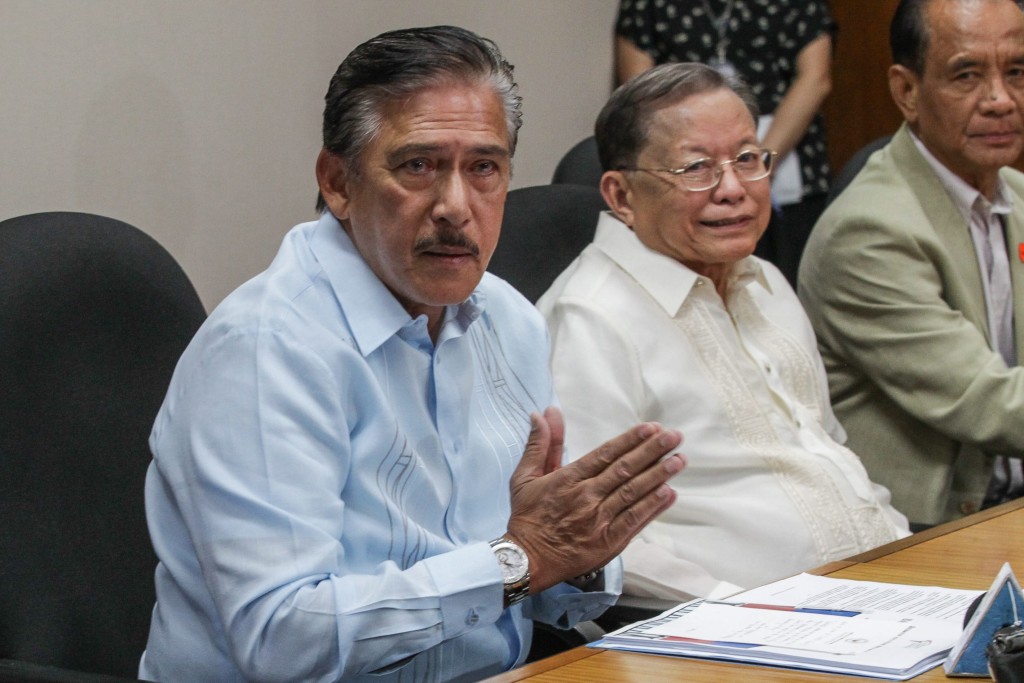
Sotto, who belongs to the Nationalist People’s Coalition (NPC), is on his second and last term at the Senate, which ends in June 2022. Pimentel, on the other hand, is set to run for re-election in next year’s Senate race. Back to being an “ordinary” senator, it was thus deemed necessary for Pimentel to give way to a non-reelectionist colleague to prevent him from having undue advantage over Senate resources if he were to stay on as Senate president. Meanwhile, five of his fellow senators are also up for reelection.
While the change in Senate leadership was smooth, the same couldn’t be said at the Lower House. The tumultuous change in leadership took place on the day President Duterte was set to deliver his third state of the nation address at the ceremonial opening of the joint sessions of both Houses held at the Batasan Pambansa in Quezon City.
In July 23 this year, the 17th Congress saw former President and now Pampanga Rep. Gloria Macapagal-Arroyo being swept anew into power. Through yet another power grab, Arroyo was installed as the new Speaker at the House of Representatives.
The ruling majority supporters of President Duterte succeeded in ousting his staunch political ally at PDP-Laban, Davao del Norte Rep. Pantaleon Alvarez, as House Speaker. No less than President Duterte later admitted the removal of Alvarez as Speaker was assisted by his daughter, Davao City Mayor Sara Duterte.
The erstwhile Speaker earlier had a run-in with the presidential daughter over the latter’s initiatives to strengthen and expand their local political party in Davao City known as Hugpong sa Pagbabago.
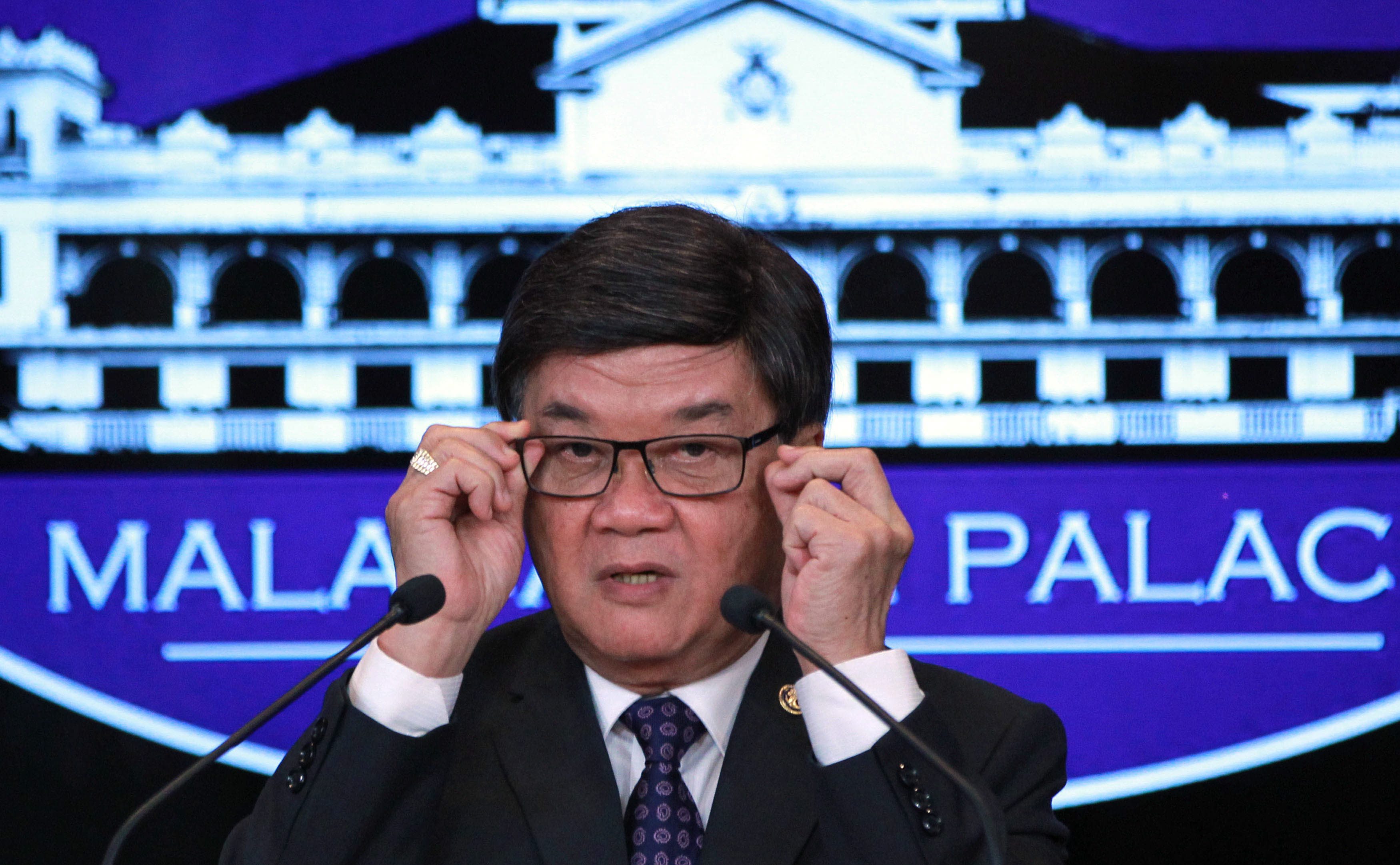
More Cabinet, Executive Branch officials fired
Continuing with his campaign versus crime and corruption, President Duterte fired a number of his appointees in various government offices, all the way to members of his own Cabinet.
The first wave of fired Cabinet official included Department of Justice (DOJ) Secretary Vitaliano Aguirre, one of the President’s Lex Talionis fraternity brothers while they were both studying at the San Beda College of Law. A fuming President Duterte blamed Aguirre for the DOJ’s mishandling of the illegal drug cases against Kerwin Espinosa and Cebu-based businessman Peter Lim.
It was a scoop of The Philippine STAR on the President’s decision to ax Aguirre in April this year. The President got upset upon learning about the controversial DOJ resolution that effectively cleared Espinosa and Lim, among others. It was the last straw, so to speak, that drove President Duterte to finally let go of his controversial Justice Secretary, who also figured before in a number of controversial cases.
Aguirre was earlier implicated in the P50-million bribery scandal involving resigned Immigration deputy commissioners Al Argosino and Michael Robles, both also from the San Beda Law School. The DOJ has jurisdiction over the Bureau of Immigration.
President Duterte immediately filled the vacancy in his Cabinet by naming Menardo Guevarra, his erstwhile deputy executive secretary, as his new Justice Secretary.
Department of Tourism (DOT) Secretary Wanda Teo was, however, given a graceful exit in May this year over corruption and “conflict of interest” allegations involving her own brothers. President Duterte plucked Agriculture undersecretary Berna Romulo-Puyat from the Department of Agriculture to become his new DOT Secretary.
One after the other, the latest casualties in President Duterte’s continuing war against corruption was Falconi, who was removed as secretary general of the Housing and Urban Development Council (HUDCC), while Secretary Jesus Dureza resigned from the Office of the Presidential Adviser on the Peace Process (OPAPP), citing command responsibility for two deputies also found embroiled in corruption.
Other than corruption issues, President Duterte also had to scrounge for new appointees to replace several of his top officials who resigned in order to run in the coming May 2019 mid-term elections. Department of Foreign Affairs (DFA) Secretary Alan Peter Cayetano, who’s eyeing a congressional seat, was one of them.
The President pulled out Ambassador Teodoro Locsin as Philippine permanent representative to the United Nations and appointed him as his new DFA Secretary. Several other Cabinet officials resigned in October after filing their respective certificates of candidacies in order to run in next year’s elections. They included Special Assistant to the President Christopher “Bong” Go, presidential adviser on political affairs Francis Tolentino and Technical Education and Skills Development Authority (TESDA) head Guiling Mamondiong.
Weighed down by lack of trusted people he could bring in to serve under his administration, President Duterte had to recycle many of his previous appointees by appointing them to other posts. A number of them are retired military and police officials, many of whom he had known while he was mayor of Davao City.
For one, his first Customs Commissioner Nicanor Faeldon has taken his oath as the new deputy administrator of the Office of Civil Defense (OCD).
His transfer to OCD came after Faeldon made several attempts to resign following the controversial attempt by certain rogue elements to smuggle in P6.4 billion worth of shabu or methamphetamine, which took place during his watch as Customs chief.
After being cited for contempt in September 2017 while testifying on the shabu-smuggling investigation before the Senate Blue Ribbon Committee, Faeldon was first detained at the Senate. He was later transferred to the Pasay City Jail for his alleged “arrogance” and continued “defiance” at the resumption of the Senate hearing on January 29 this year.
Another “recycled” presidential appointee is Isidro Lapeña, who took over as Customs chief following the resignation of Faeldon in August 2017. However, Lapeña himself got embroiled in yet another shabu smuggling controversy. Some estimated P11 billion worth of shabu were smuggled out of the Customs Bureau using magnetic lifters that were later discovered by the Philippine Drugs Enforcement Agency (PDEA).
After a series of finger-pointing ensued between PDEA chief Aaron Aquino and Lapeña, the President decided to transfer Lapeña in October to become the new Director General of TESDA.
President Duterte took up the cudgels for Lapeña, who he likened to Faeldon as having been fooled by corrupt employees and criminals at the Bureau of Customs. In exasperation, the President appointed yet another military guy at the graft-prone Bureau of Customs by naming retired General Rey Leonardo Guerrero, former Chief of Staff of the Armed Forces of the Philippines (AFP), as new Customs chief.
Immediately, Guerrero implemented the directives of the Commander-in-chief to assign military personnel to keep an eye out on criminal and corruption activities in various ports of the Customs Bureau.
Originally, the President installed Guerrero as administrator of the Maritime Industry Authority (MARINA) when the latter retired in April. This was a few months after the President fired former MARINA administrator Marcial Amaro III in January this year over excessive travels.
In October, the President appointed newly retired Army chief Lt. Gen. Rolando Bautista as the next secretary of the Department of Social Welfare and Development (DSWD).
The President offered a new government post to Bautista a few weeks after announcing that he originally planned to appoint him as the new National Food Authority (NFA) administrator.
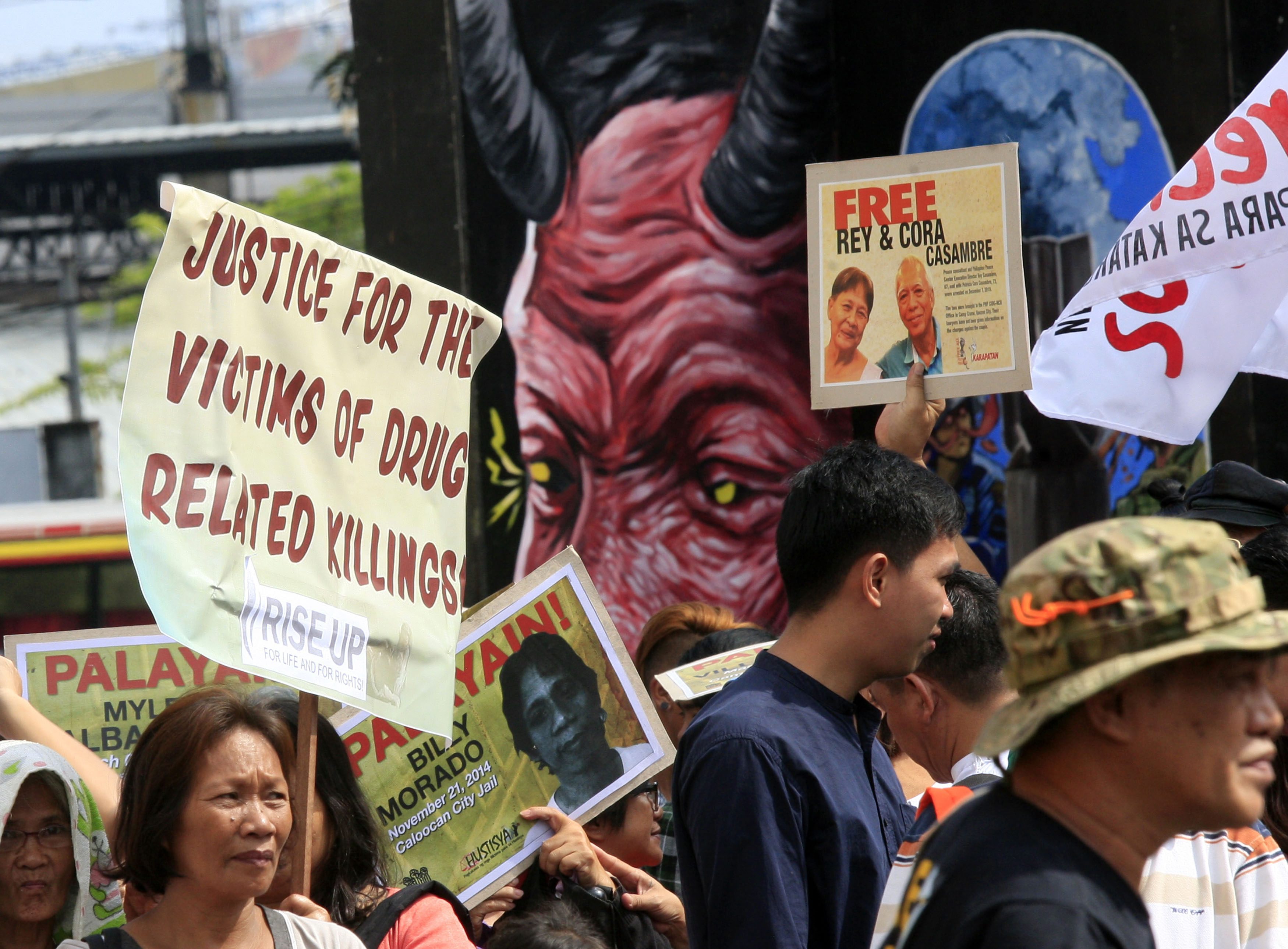
ICC cases of alleged EJK-related “crimes against humanity”
As of this date, there are at least four “confidential communications” against President Duterte’s deadly war on drugs that have been filed before the International Criminal Court (ICC). These “confidential communications” were separate communications filed by lawyer Jude Sabio and backed by a supplemental communication of Sen. Antonio Trillanes IV and Rep. Gary Alejano in 2017, and the families of alleged victims of extrajudicial killings, who filed cases one after the other last year.
The Hague-based court already launched a preliminary examination, not investigation, into Duterte’s anti-narcotics crackdown. Last March, the administration formally sent the Philippines’ letter of withdrawal from the Rome Statute, the treaty that created ICC. Despite this, the Philippines remains a party to the Rome Statute, as the withdrawal will only take effect a year after the notification’s date of receipt.
Human rights advocates claim that there have been more than 12,000 individuals killed since Duterte launched the brutal war on drugs.
Duterte administration officials, however, downplayed the numbers, claiming a little over 4,000 deaths were recognized and recorded by law enforcement authorities as direct casualties in the police’s anti-drug operations.
Incidentally, Jude Sabio, who accused Duterte of “crimes against humanity” over alleged extrajudicial killings in his administration’s war on drugs, is running for the Senate in next year’s May elections. Citing fears for his life, Sabio filed his certificate of candidacy at the Commission on Elections through his liaison officer and childhood friend Rogelio Doydora. Sabio went into hiding in 2017 from the backlash he got from diehard Duterte supporters.
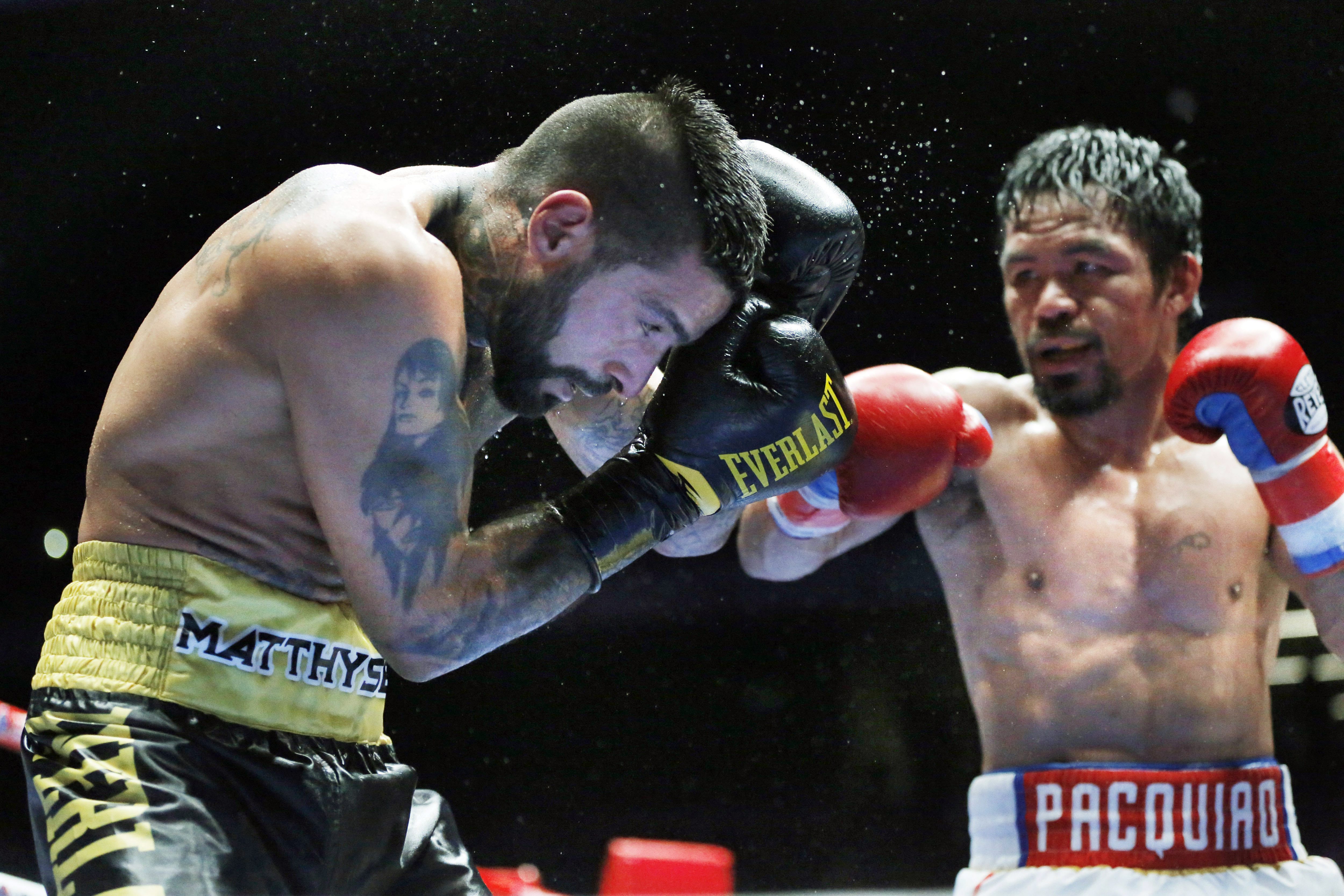
Sports
After nearly a one year absence, world boxing champion turned Senator Manny Pacquiao returned to the ring with an

emphatic seventh-round knockout victory over Lucas Matthysse. Pacquiao captured the WBA welterweight title by winning in the match held in Kuala Lumpur, Malaysia on July 15. No less than President Duterte, along with Malaysian Prime Minister Mahathir Mohamad, watched Pacquiao’s title fight.
Back home, the University of the Philippines’ basketball team finally broke into the championship games of the annual University Athletic Association of the Philippines (UAAP). After 32 years, UP made it to the finals with arch rival, Ateneo de Manila University. While the team lost the championship in two-out-of-three games, UP managed to reassert itself by entering the finals and finishing a solid second.
Weightlifter Hidilyn Diaz, one of PeopleAsia’s People of the Year 2019 awardees, brought honor anew to the country by winning a gold medal in women’s weightlifting at the Asian Games in Jakarta, Indonesia. Diaz won silver two years ago in the same category at the 2016 Rio de Janeiro Olympics, ending the country’s 20-year olympic medal drought.


Beauty pageants
Traffic in Metro Manila was relatively light on the morning of December 17, Monday, as not a few Filipinos in this beauty contest-obsessed country were glued to their TV sets and electronic devices watching Catriona Gray slay the competition live at Miss Universe.

Before the end of the three-hour show in Bangkok, Catriona, one of PeopleAsia’s Woman of Style and Substance 2018 awardees, as most beauty pageant watchers had predicted, won for the country its fourth Miss Universe crown. While it took Margie Moran four years to bring back home the coveted Miss Universe title first won by Gloria Diaz in 1969, it only took Catriona three years to follow in Pia Wurtzbach’s footsteps.
A few months earlier, Binibining Pilipinas International Ahtisa Manalo nearly won Miss International in Tokyo, Japan. It would have been the country’s seventh Miss International crown. Ahtisa, however, had to settle for first runner-up to her Venezuelan rival.
(All images used in this story, unless stated otherwise, are courtesy of The Philippine STAR)





